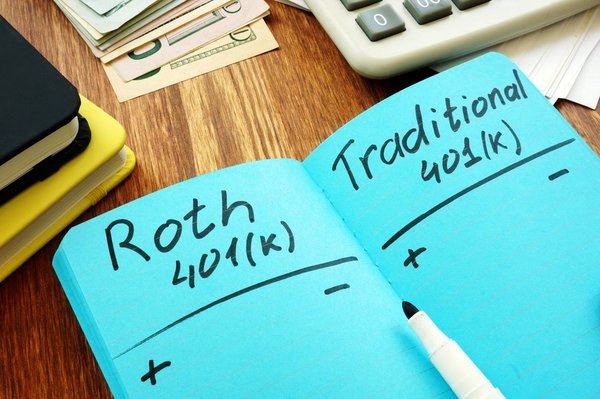A 401(k) plan can be invaluable in saving for retirement. But achieving your retirement goals isn't just a matter of how much you save in your 401(k). Your returns, or how much your investments earn each year, play a major role, too. Periodically reviewing your annual returns is a must for your 401(k) plan, as well as your entire investment portfolio.
With your 401(k) returns, results will vary based on a number of factors. Some of these, like how the stock market performs, are out of your hands. But the decisions you make about how you invest have a big impact as well.
What is a good 401(k) rate of return?
The average 401(k) rate of return ranges from 5% to 8% per year for a portfolio that's 60% invested in stocks and 40% invested in bonds. Of course, this is just an average that financial planners suggest using to estimate returns.
However, if you invest a higher percentage in stocks -- as is common for many investors who can afford more risk -- you'll typically earn higher average returns. Investing conservatively by allocating more to bonds reduces your risk of losing money, but also produces lower returns.
Keep in mind, though, that your returns for any given year shouldn't concern you too much. Short-term fluctuations are normal. Long-term results are what matter for any investment.
There's also a surefire way to boost the returns on the money you contribute, which is to take full advantage of your employer's 401(k) match. If your company matches 50% of your contribution, that's a 50% return on your investment.

Five factors that affect your 401(k) returns
Your 401(k) rate of return depends on a number of factors beyond the stock market's performance. Here are five things that affect how much your retirement account earns.
1. Consistency of contributions
The beauty of a 401(k) plan is that, thanks to payroll deductions, you're automatically dollar-cost averaging, which means you're investing a fixed amount at regular intervals. This tends to produce the best average returns over time by reducing your investment costs. You'll get the best 401(k) rate of return by being consistent and not changing your contributions based on short-term stock market performance.
2. Asset allocation
Your ideal asset allocation depends on your age, your target retirement date, and your overall risk tolerance, which is the amount of risk you can comfortably handle. If you have a long time horizon and high risk tolerance, you'll want to invest heavily in stocks. Investing more in bonds is recommended as your retirement date gets closer, or if you have a low risk tolerance.
Investing primarily in stocks usually produces higher average 401(k) returns, but it also increases your risk of losing money, particularly in the short term. However, if you invest too heavily in bonds, particularly at a young age, you may not achieve the returns you need to hit your retirement goals.
3. Investment options
The average 401(k) plan offers eight to 12 investment options, and mutual funds are by far the most common. Many are index funds, which means your returns will mirror an underlying benchmark index, like the S&P 500, though your earnings will lag slightly due to fees. Looking for funds with the lowest expense ratio can boost your returns.
4. Retirement age
Another common type of mutual fund you'll find in 401(k) plans is target-date funds. You choose a target retirement date, and the fund automatically rebalances to bonds and cash equivalents, such as money market funds, as that date approaches. You get greater stability, but that translates to lower average returns the closer you get to retirement.
5. Fees
Higher fees mean that less of your money is actually invested, which of course lowers your returns. Even seemingly small fees can have a big impact. For example, suppose you invested $5,000 annually in your 401(k) and earned 7% average annual returns. Paying a 0.5% fee vs. a 0.25% fee would reduce your returns by nearly $20,000 after 30 years.
How to calculate a 401(k) annual return
When you invest a lump sum of money, calculating the average annual return is simple. But since you make regular contributions to your 401(k), you can't just take the ending balance and divide it by the starting balance.
If you're calculating your return for a one-year period:
- Take the ending balance and subtract any contributions you made over the past year.
- Divide by the starting balance from one year ago.
- Subtract 1 and multiply the result by 100. That will tell you the percentage total return.
If you've used a period other than a year, there's more math involved. Take the number you got from dividing the adjusted ending balance by the starting balance and then use an exponential calculation as follows:
- For a two-year period, you'll need to take the square root. On a calculator, use the power key to raise the number to the 1/2 power. For a three-year period, you'd raise it to the 1/3 power, and so on.
- Then take the final answer, subtract 1, and multiply the result by 100. What's left is the average annual return.
The longer the period you're measuring and the more contributions you've made, the less accurate this simple calculation will be. A more appropriate calculation is the time-weighted return, which measures actual investment portfolio performance regardless of deposits or withdrawals.
For most situations, though, both methods will produce results that are reasonably close to each other and reflect your performance well. Regardless of which measurement you choose, make sure you regularly revisit your 401(k) returns to be sure that your investment decisions are in sync with your goals.














































